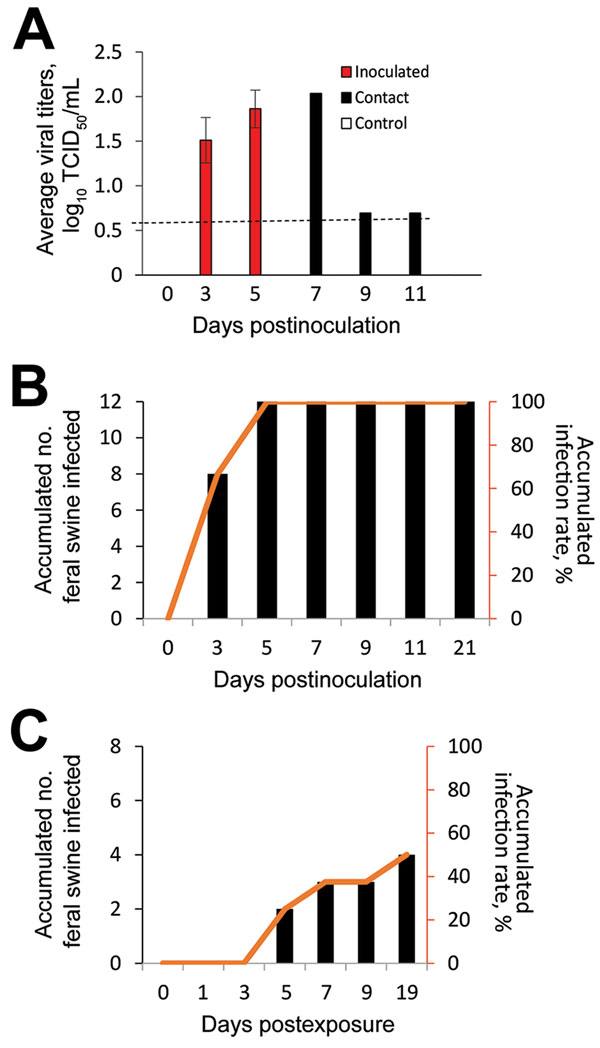Volume 24, Number 6—June 2018
Research
Influenza D Virus Infection in Feral Swine Populations, United States
Figure 2

Figure 2. Infectivity and transmissibility of influenza D virus in feral swine populations, United States. A) Viral titers from nasal washes of feral swine. Feral swine were inoculated intranasally with 106 TCID50/mL of influenza D/bovine/C00046N/Mississippi/2014 virus. Naive feral swine were exposed to the virus by direct contact with D/bovine/C00046N/Mississippi/2014 virus–inoculated feral swine. On days 3, 5, 7, 9, and 11 after the inoculation group was inoculated, nasal washes were collected from all 3 groups of swine and in HRT-18G cells. Ending titers are expressed as log10 TCID50/mL. The limit of virus detection was 100.699 TCID50/mL. Error bars represent standard error of viral titers. The dashed line indicates the lower limit of detection, which is 100.699 TCID50/mL. B) Accumulated number of feral swine infected and accumulated infection rate for the feral swine inoculated with influenza D virus. C) Accumulated number of feral swine infected and accumulated infection rate for the contact feral swine. A feral swine was considered infected if a viral titer was detected in in nasal washes, serum samples, or both or if this feral swine seroconverted. TCID50, 50% tissue culture infective dose.
1These authors contributed equally to this article.
2Current affiliation: South China Agricultural University, Guangzhou, China.